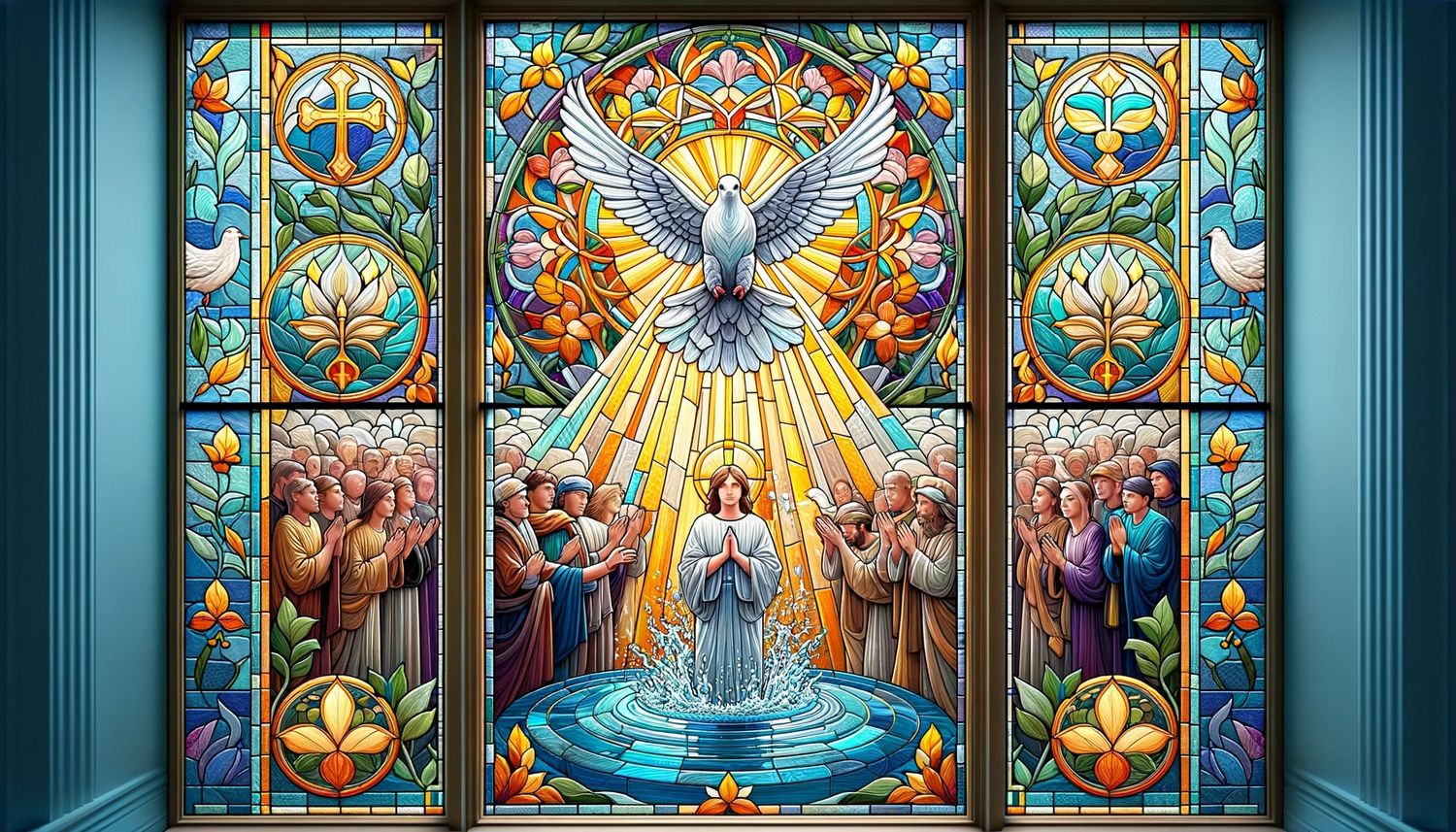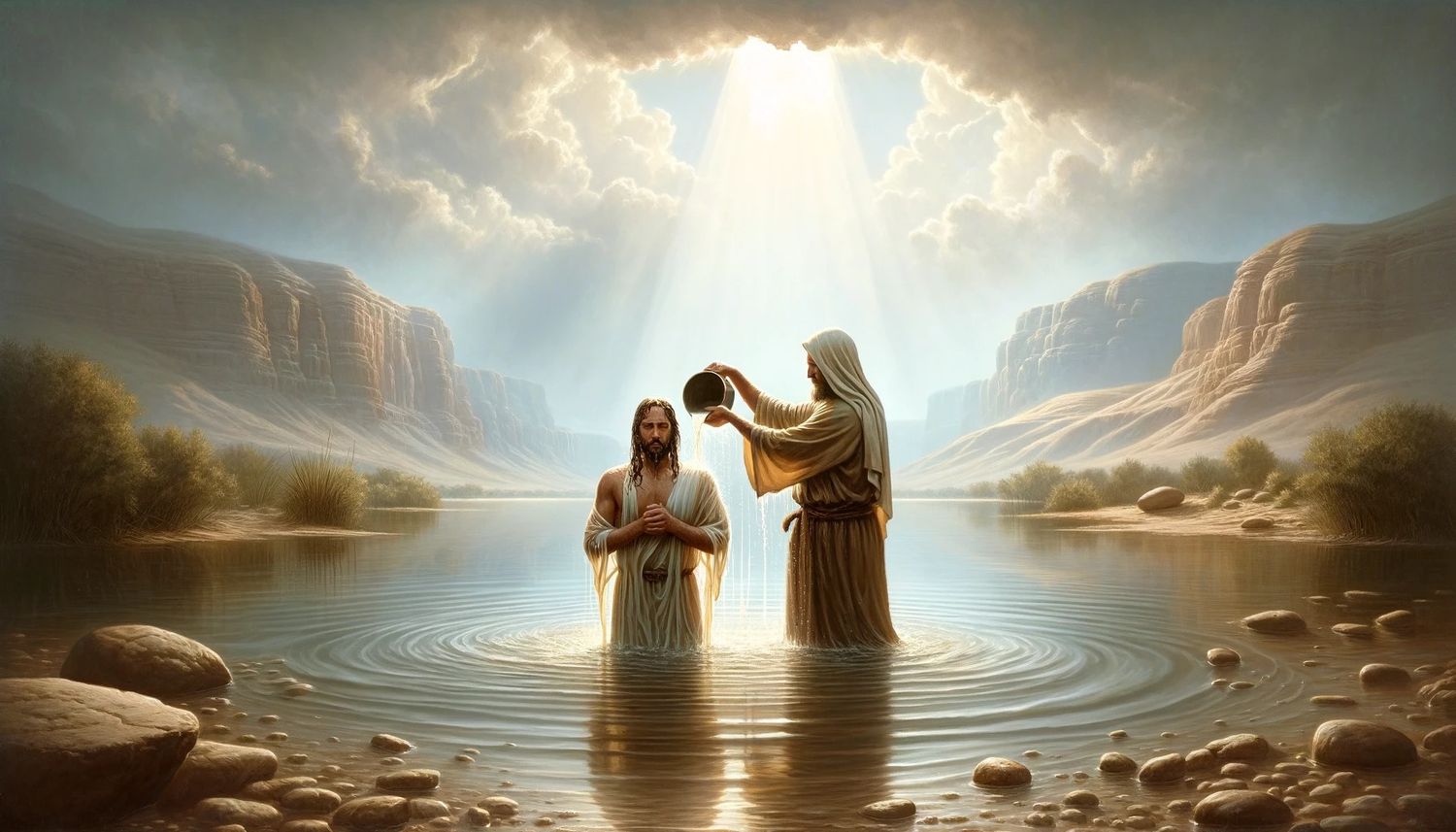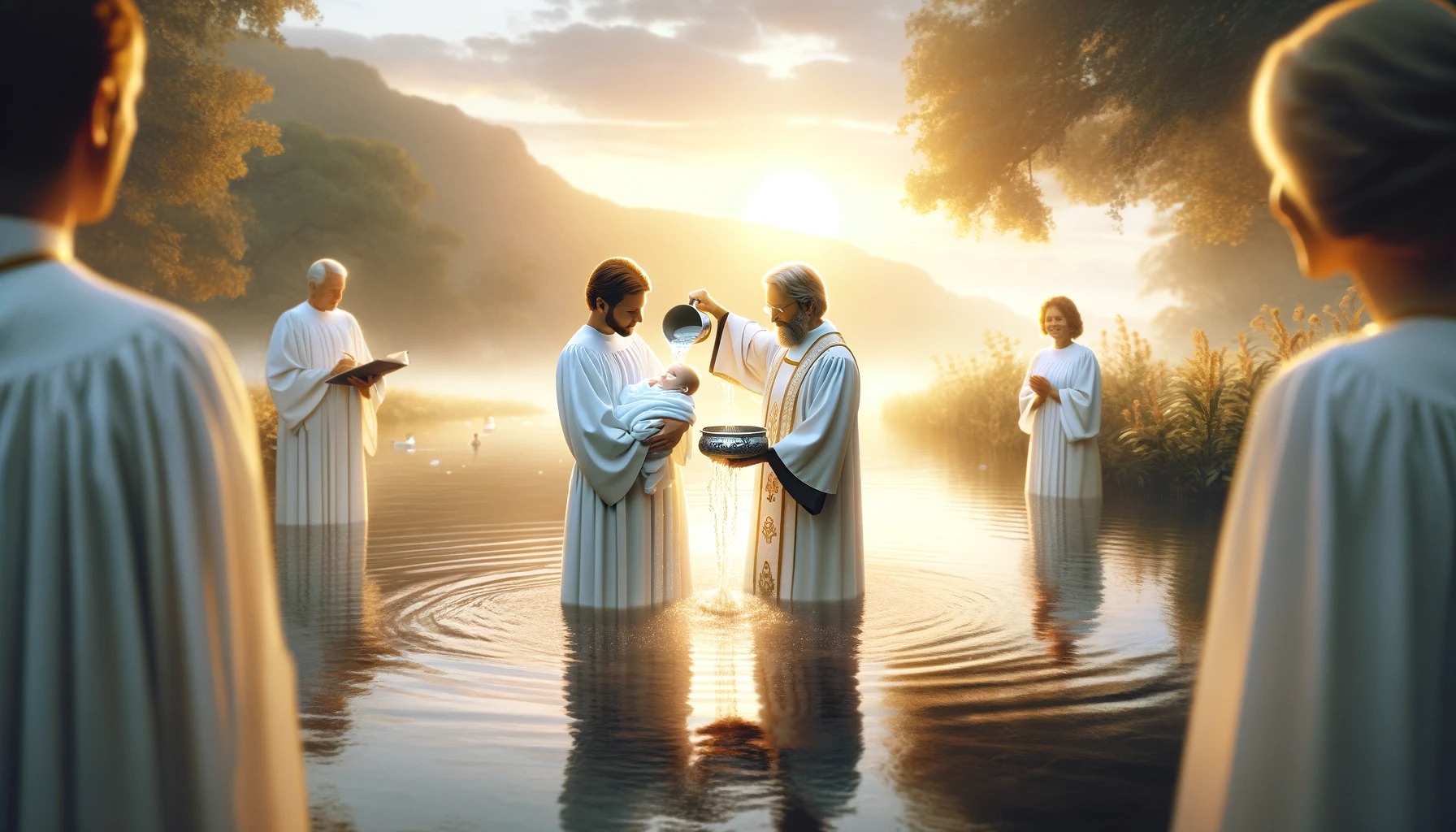Home>Theology and Spirituality>How Is The Flood Considered A Precursor Of Baptism


Theology and Spirituality
How Is The Flood Considered A Precursor Of Baptism
Published: February 28, 2024
Ericka Andersen, an editor at Christian.net, expertly merges digital strategy with content creation, focusing on faith and societal issues. Her communication skills enhance the platform's engaging narratives, fostering meaningful dialogue on belief's impact on society.
Explore the theological significance of the flood as a precursor to baptism. Understand the spiritual connections and implications in theology and spirituality.
(Many of the links in this article redirect to a specific reviewed product. Your purchase of these products through affiliate links helps to generate commission for Christian.net, at no extra cost. Learn more)
Table of Contents
Introduction
How is the flood considered a precursor of baptism? The concept of the flood as a precursor of baptism is a fascinating topic that delves into the symbolism and theological significance of water in Christianity. The biblical story of the flood and its connection to the sacrament of baptism offers profound insights into the spiritual journey of believers. By exploring the parallels between the flood and baptism, we can gain a deeper understanding of the transformative power of water in the Christian faith. Let's embark on this enlightening exploration of the flood as a precursor of baptism and unravel its profound implications in Christian theology.
The Symbolism of Water in Christianity
-
Water as a Symbol of Cleansing: In Christianity, water is often associated with purification and cleansing. The act of baptism, which involves the use of water, symbolizes the washing away of sin and the spiritual rebirth of the individual. This cleansing aspect of water is deeply rooted in the Christian tradition and is reflective of the believer's desire for spiritual renewal and redemption.
-
Water as a Symbol of Life: Another significant symbolism of water in Christianity is its association with life. In the biblical narrative, water is often portrayed as a source of sustenance and vitality. The imagery of water as a life-giving force is mirrored in the spiritual context, where the sacrament of baptism is seen as a means of entering into new life in Christ. Just as water sustains physical life, baptism is believed to initiate believers into a new life of faith and spiritual abundance.
-
Water as a Symbol of Transformation: Water is also emblematic of transformation in Christian symbolism. The fluid and dynamic nature of water represents the potential for profound change and renewal. Through the sacrament of baptism, individuals undergo a transformative experience, symbolizing their transition from a life of sin and separation from God to a life of grace and communion with the divine. The symbolism of water underscores the profound spiritual metamorphosis that occurs through the act of baptism.
-
Water as a Symbol of Rebirth: In Christian theology, water is often associated with the concept of rebirth. The act of baptism is viewed as a symbolic death to the old self and a rebirth into a new identity in Christ. This symbolism is deeply ingrained in the Christian understanding of salvation and the believer's journey towards spiritual renewal. The use of water in baptism signifies the believer's participation in the death and resurrection of Jesus Christ, marking a profound spiritual rebirth and a new beginning in the life of faith.
-
Water as a Symbol of Divine Presence: Finally, water holds symbolic significance in Christianity as a representation of the divine presence. Throughout the biblical narrative, water is often linked to encounters with God and acts as a medium through which divine grace and power are manifested. In the sacrament of baptism, water serves as a visible sign of God's presence and the outpouring of the Holy Spirit upon the individual, signifying the believer's initiation into the community of faith and their union with the triune God.
The symbolism of water in Christianity encompasses a rich tapestry of meanings, reflecting the profound spiritual significance of this elemental substance in the life of believers. From cleansing and rebirth to transformation and divine presence, water serves as a powerful symbol that resonates deeply with the core tenets of the Christian faith.
The Biblical Story of the Flood
The biblical story of the flood is recounted in the book of Genesis, where it occupies a central place in the narrative of human history and divine intervention. According to the biblical account, the world had become corrupted and filled with violence, prompting God to bring about a cataclysmic flood to cleanse the earth of its wickedness. The story centers on the figure of Noah, a righteous man who found favor in the eyes of the Lord. Instructed by God to build an ark, Noah, along with his family and pairs of animals, sought refuge from the impending deluge. As the floodwaters engulfed the earth, all life outside the ark perished, while Noah and those with him were preserved through the protective vessel. After the waters receded, God made a covenant with Noah, promising never again to destroy the earth with a flood and establishing the rainbow as a sign of this covenant.
The biblical narrative of the flood is replete with profound symbolism and theological significance. It serves as a powerful testament to the consequences of human sinfulness and the redemptive mercy of God. The flood represents a decisive act of divine judgment, signaling the consequences of human rebellion and moral depravity. At the same time, it embodies the theme of divine preservation and deliverance, as God's grace ensures the survival of a remnant through the vessel of the ark. The story of the flood underscores the themes of divine justice, human accountability, and the enduring faithfulness of God in the face of human frailty.
The biblical story of the flood has captured the imagination of believers and non-believers alike, inspiring artistic representations, literary adaptations, and theological reflections throughout history. Its enduring relevance lies in its portrayal of the complex interplay between human agency and divine sovereignty, the consequences of sin, and the promise of divine restoration. As a foundational narrative in the Judeo-Christian tradition, the story of the flood continues to resonate as a profound and enduring testament to the enduring themes of judgment, mercy, and covenantal faithfulness in the biblical narrative.
The Connection Between the Flood and Baptism
The connection between the flood and baptism is a compelling aspect of Christian theology that illuminates the profound parallels between these two pivotal events. At first glance, the flood and baptism may seem disparate, one representing a catastrophic deluge and the other a sacred ritual of initiation. However, upon closer examination, the theological connections between the two reveal a deeper coherence in the Christian understanding of salvation and spiritual transformation.
-
Water as a Medium of Judgment and Renewal: Both the flood and baptism involve the use of water as a transformative medium. In the biblical story of the flood, water serves as a means of divine judgment, cleansing the earth of its corruption and initiating a new beginning for creation. Similarly, in the sacrament of baptism, water symbolizes the believer's participation in the death and resurrection of Jesus Christ, signifying the washing away of sin and the spiritual rebirth of the individual. The dual symbolism of water as an agent of judgment and renewal underscores the profound connection between the flood and baptism as transformative acts with far-reaching implications.
-
The Theme of Death and New Life: In both the flood and baptism, the theme of death and new life is prominently featured. The flood narrative portrays the overwhelming of the old world and the emergence of a new reality through the preservation of Noah and his family in the ark. This theme of death and new life finds resonance in the Christian understanding of baptism, where believers are united with Christ in his death and resurrection, symbolizing the death of the old self and the emergence of a new identity in Christ. The parallel between the flood and baptism as events marking a transition from death to new life underscores their shared theological significance in the Christian narrative.
-
The Concept of Covenant and Restoration: Another significant connection between the flood and baptism lies in the themes of covenant and restoration. In the aftermath of the flood, God establishes a covenant with Noah, promising never again to destroy the earth with a flood and setting the rainbow as a sign of this covenant. This act of divine restoration and covenantal faithfulness finds echoes in the sacrament of baptism, where believers enter into a new covenant relationship with God through their identification with Christ. The connection between the flood and baptism as expressions of divine covenant and restoration underscores their shared theological underpinnings in the narrative of redemption and renewal.
-
The Symbolism of Water as a Unifying Element: Both the flood and baptism employ water as a unifying element that transcends individual experience and encompasses the broader scope of divine purpose. In the flood narrative, water becomes the instrument through which God's judgment and preservation are enacted, serving as a unifying force that reshapes the course of human history. Similarly, in the sacrament of baptism, water serves as a unifying symbol of the believer's incorporation into the body of Christ and the community of faith, signifying their participation in the larger narrative of God's redemptive work. The symbolism of water as a unifying element underscores the interconnectedness of the flood and baptism within the broader framework of God's salvific plan for humanity.
The connection between the flood and baptism offers profound insights into the theological coherence of these two events within the Christian narrative. By recognizing the shared themes of judgment and renewal, death and new life, covenant and restoration, and the unifying symbolism of water, believers can gain a deeper appreciation for the interconnectedness of these pivotal moments in the unfolding drama of salvation history.
Theological Interpretations of the Flood as a Precursor of Baptism
The theological interpretations of the flood as a precursor of baptism offer profound insights into the symbolic and spiritual dimensions of these two pivotal events in the Christian narrative. From the early centuries of the church to contemporary theological reflections, scholars and theologians have explored the rich connections between the flood and baptism, uncovering layers of meaning that underscore the transformative power of water in the divine economy of salvation.
-
Typological Interpretation: One of the key theological interpretations of the flood as a precursor of baptism is rooted in the typological understanding of the Old Testament as prefiguring the realities of the New Testament. In this framework, the flood is seen as a type or foreshadowing of the sacrament of baptism, wherein the Old Testament event anticipates and finds its fulfillment in the New Testament rite. The typological interpretation highlights the continuity and fulfillment of God's redemptive purposes across the biblical narrative, drawing parallels between the cleansing waters of the flood and the regenerative waters of baptism as symbols of divine judgment and spiritual renewal.
-
Redemptive Symbolism: Another theological interpretation emphasizes the redemptive symbolism inherent in both the flood and baptism. The flood is viewed as a dramatic expression of God's judgment on human sinfulness and moral corruption, while also serving as a means of preserving a remnant through the vessel of the ark. This redemptive act of preservation finds resonance in the sacrament of baptism, where believers are united with Christ in his death and resurrection, symbolizing their deliverance from the power of sin and their incorporation into the community of faith. The theological interpretation of redemptive symbolism underscores the continuity of God's redemptive work from the Old Testament to the New Testament, with the flood prefiguring the ultimate deliverance and renewal brought about through the saving work of Christ.
-
Covenantal Continuity: The theological interpretation of covenantal continuity highlights the connection between the covenant established with Noah after the flood and the new covenant inaugurated through the life, death, and resurrection of Jesus Christ. The covenant with Noah, marked by the sign of the rainbow, signifies God's commitment to the preservation and renewal of creation, foreshadowing the new covenant sealed in the blood of Christ. Baptism, as the sacrament of initiation into the new covenant, signifies believers' participation in the redemptive promises of God, thereby establishing a continuity between the covenantal themes of the flood and the sacrament of baptism.
-
Eschatological Anticipation: Some theological interpretations of the flood as a precursor of baptism emphasize its eschatological significance, pointing to the future fulfillment of God's redemptive purposes in the consummation of all things. The flood is seen as a harbinger of the final judgment and restoration, anticipating the ultimate renewal of creation and the establishment of God's eternal kingdom. In this framework, baptism is understood as a participation in the eschatological hope of believers, as they are united with Christ in his death and resurrection, anticipating the future resurrection and the new heavens and new earth. The theological interpretation of eschatological anticipation underscores the interconnectedness of the flood and baptism within the broader framework of God's redemptive plan for the culmination of history.
The theological interpretations of the flood as a precursor of baptism offer a rich tapestry of insights into the profound connections between these two pivotal events in the Christian narrative. By exploring the typological, redemptive, covenantal, and eschatological dimensions of the flood and its relationship to the sacrament of baptism, believers can gain a deeper appreciation for the theological coherence and spiritual significance of these interconnected symbols of divine judgment, preservation, and renewal.
Read more: How To Prepare For Baptism
Conclusion
The exploration of the flood as a precursor of baptism unveils a tapestry of profound theological connections and spiritual insights that resonate deeply with the core tenets of the Christian faith. From the symbolism of water as a medium of cleansing, life, transformation, and rebirth to the biblical narrative of the flood as a testament to divine judgment, preservation, and covenantal faithfulness, the parallels between the flood and baptism offer a compelling framework for understanding the transformative power of water in the Christian narrative. The theological interpretations of the flood as a precursor of baptism further illuminate the typological, redemptive, covenantal, and eschatological dimensions of these pivotal events, underscoring their interconnectedness within the broader framework of God's redemptive plan for humanity. As believers reflect on the profound parallels between the flood and baptism, they are invited to contemplate the enduring themes of judgment and renewal, death and new life, covenant and restoration, and the eschatological hope that permeate the Christian narrative. Ultimately, the flood as a precursor of baptism serves as a poignant reminder of the transformative power of water in the divine economy of salvation and the enduring significance of these interconnected symbols in the spiritual journey of believers.














